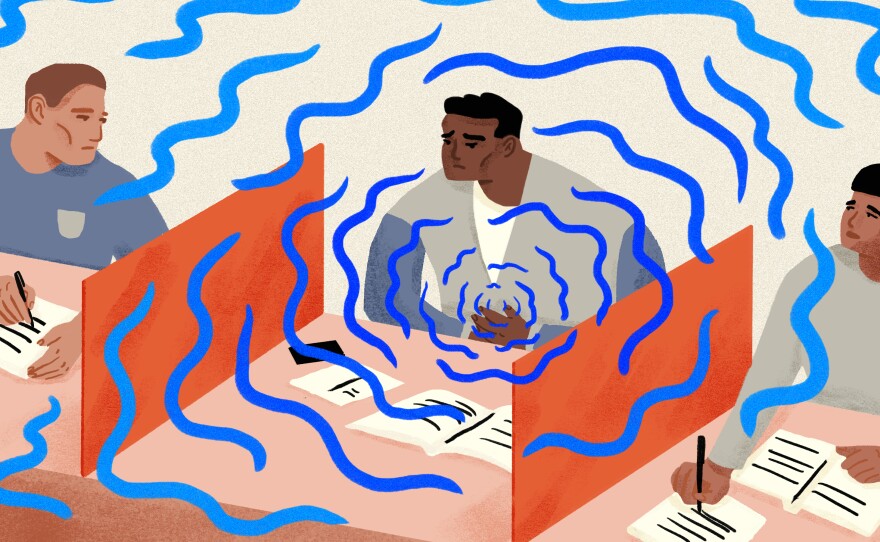College students across the country struggle with food insecurity.
Tuition and books, plus many hours away from a job, can be a huge financial burden on students — and for many, skipping meals can be a last-minute solution to a bad financial situation.
A new government report finds that millions of college students are very likely struggling. And the report — which is from the Government Accountability Office — concludes that the federal systems in place could do a better job of helping them.
There isn't federal data on food insecurity among college students nationally, so the GAO reviewed 31 studies on the topic, showing that most concluded that over a third of college students don't always have enough to eat.
"This is a major, major moment and a major victory in the fight against campus hunger," Sara Goldrick-Rab, a professor at Temple University, said at a briefing Wednesday. The GAO cited her research on food insecurity throughout the report.
GAO's report points out that just 29 percent of college students today are "traditional students" — those who enroll immediately after high school and depend on their parents for financial support. The vast majority — 71 percent — don't follow the narrative of the "typical" college student. They might be financially independent, have kids of their own or fit any one of a number of characteristics that the report lays out.
And that's important to remember: While middle-class students may joke about being "broke college students" who eat ramen for a week, many students are truly hungry, says Carrie Welton, a policy analyst at the Center for Law and Social Policy.
"Low-income students, first-generation students and students of color have a very different experience," Welton says.
The report focuses on ways that the federal Supplemental Nutrition Assistance Program could better help students struggling with hunger. SNAP — which operates under the Food and Nutrition Service of the federal government — provides low-income Americans with assistance for food.
It's one of the best ways to reduce food insecurity among college students, says Welton. But many students who could be receiving those benefits don't realize it, because the eligibility guidelines are unclear. According to the report, almost 2 million students who may have been eligible for SNAP didn't receive benefits in 2017.
"It is safe to say that it's confusing and cumbersome, and feels like a very large lift, not only for students to understand it but post-secondary institutions," Welton explains.
Many colleges are taking their own steps to address hunger on campus by organizing food pantries and coordinating among staff to identify and work with students who need assistance. But school staff that try to help students access SNAP benefits are often faced with hurdles. At many colleges GAO researchers spoke with, students and school leaders said they were unclear about the SNAP eligibility rules or had incorrect information about them.
Even some staff at state SNAP agencies and regional Food and Nutrition Service offices said that they weren't entirely clear on eligibility rules. The report recommended that the Food and Nutrition Service website clarify SNAP eligibility requirements so that the site can serve as a resource for schools and states.
The report also recommended that the Food and Nutrition Service review the various approaches that individual state SNAP agencies are taking to help students and share them among the states. These state agencies have some flexibility in how they provide services, and some are taking steps to reach out to college students and clarify eligibility rules.
"No one gets ahead by letting these numbers go on," Goldrick-Rab said Wednesday.
The federal government invests billions every year in student financial aid — but many students who receive those funds don't make it through college. As the GAO report notes, access to SNAP benefits has been shown to increase the likelihood that those students will graduate with a degree.
Copyright 2019 NPR. To see more, visit https://www.npr.org.






